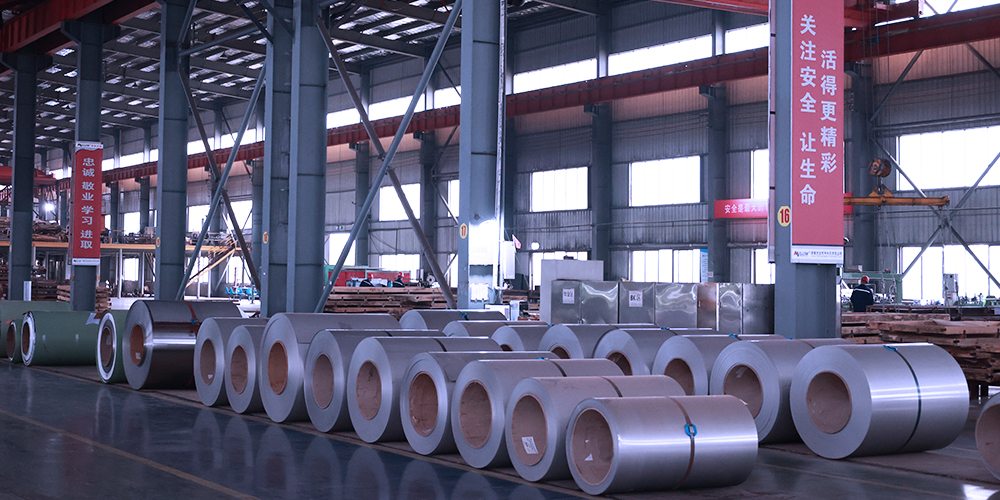1. Definition and basic structure
Austenite is a kind of microstructure of steel, its crystal structure is face-centered cubic structure. In stainless steel, austenitic stainless steel contains higher alloying elements such as nickel and manganese, and the existence of these elements makes stainless steel able to maintain austenitic structure at room temperature. For example, the common 304 stainless steel is austenitic stainless steel, which has a nickel content between 8-10.5%, and this composition helps to stabilize the austenitic phase.
2. The difference between austenitic stainless steel and other stainless steels
Crystal structure distinction
Compared with ferritic stainless steel, the crystal structure of ferritic stainless steel is body-centered cubic structure, and austenitic stainless steel is face-centered cubic structure.
This makes austenitic stainless steel have better toughness and ductility. For example, when cold working, austenitic stainless steel such as 316L can withstand large deformation without brittle cracking, while ferritic stainless steel may crack under the same cold working conditions.
Corrosion resistance difference
Austenitic stainless steel generally has better corrosion resistance than martensitic stainless steel. Martensitic stainless steel contains a high carbon content and its corrosion resistance is relatively weak. The chromium element in austenitic stainless steel can form a dense chromium oxide protective film, which effectively prevents the erosion of corrosive media. For example, in the Marine environment, 304 and 316 austenitic stainless steel can resist the corrosion of seawater, while martensitic stainless steel is easy to rust.
Mechanical property distinction
The strength and hardness of austenitic stainless steel are relatively low, but they have high toughness and plasticity. In contrast, martensitic stainless steel can obtain higher strength and hardness after quenching and tempering treatment, but the toughness is poor. In the need to withstand a large impact load, austenitic stainless steel has more advantages, such as in food processing equipment, 304 stainless steel can withstand the vibration and collision during the operation of the equipment.
3. Variety
Chromium-nickel austenitic stainless steel
This is the most common type of austenitic stainless steel such as 304 (06Cr19Ni10) and 316 (06Cr17Ni12Mo2). 304 stainless steel is widely used in tableware, kitchenware, architectural decoration and other fields. It has good corrosion resistance, machining performance and welding performance. 316 stainless steel is added on the basis of 304 stainless steel molybdenum element, so that its corrosion resistance is stronger, especially in the environment containing chloride ions, such as Marine environment, chemical equipment, 316 stainless steel shows excellent corrosion resistance.
Chromium-manganese-nickel austenitic stainless steel
This stainless steel uses manganese and nickel as austenitic stabilizing elements, replacing some of the expensive nickel. For example, 201 stainless steel (12Cr17Mn6Ni5N), its cost is relatively low, often used in interior decoration, some corrosion resistance requirements are not very high occasions. However, its corrosion resistance and mechanical properties are slightly worse than 304 stainless steel.
Ultra-low carbon austenitic stainless steel
For example, 304L (022Cr19Ni10) and 316L (022Cr17Ni12Mo2) have a lower carbon content. During the welding process, the risk of intergranular corrosion is reduced due to the low carbon content. It is widely used in some chemical equipment, medical equipment and other fields with high corrosion resistance requirements, to ensure that the equipment will not be damaged due to intergranular corrosion during long-term use.
4. Segmentation by performance and application
Corrosion-resistant austenitic stainless steel
In addition to the 316 and 316L stainless steels mentioned above for corrosion resistant environments, there are some austenitic stainless steels specifically designed for special corrosive media. For example, 904L (015Cr21Ni26Mo5Cu2) stainless steel has good corrosion resistance to strong acidic media such as sulfuric acid, and is often used in the chemical industry to deal with acidic substances.
High temperature austenitic stainless steel
Like 310S (06Cr25Ni20) stainless steel, it has a high nickel and chromium content, which can maintain good oxidation resistance and mechanical properties under high temperature environment. This kind of stainless steel is often used in high temperature stoves, heat treatment equipment, etc., and can still work stably in a high temperature environment of about 1000 ° C, without serious oxidation and deformation.
Free cutting austenitic stainless steel
Adding sulfur, selenium and other elements to austenitic stainless steel can improve its cutting performance. For example, Y1Cr18Ni9 stainless steel, in the machining process, the chip is easy to break, the tool wear is relatively small, improve the processing efficiency, suitable for the need for a large number of cutting parts manufacturing, such as some precision instrument parts.

